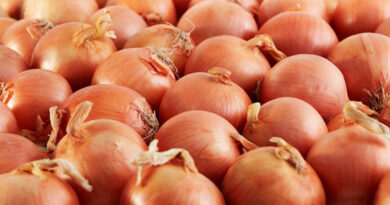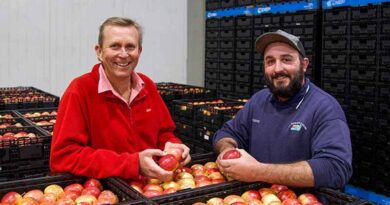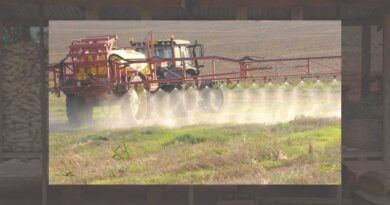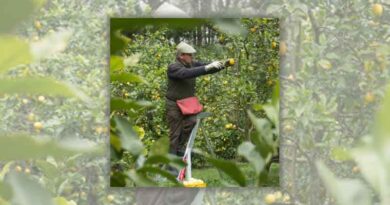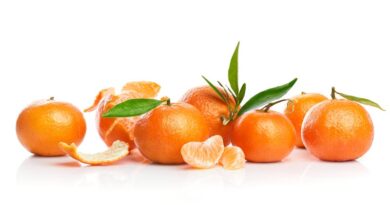Kumara season imbued with uncertainty
26 October 2022, NZ: The rising costs of production, waning consumer demand and continuing labour shortages have left Northland kumara growers nervous about what the coming growing season will bring.
Northern Wairoa Kumara Growers Association president, Doug Nilsson, grows around 80 hectares of kumara northwest of Dargaville. He believes growers may cut back on the area they plant due to difficulty in securing funding from banks after two years of low or negative returns.
“Next year’s not looking flash,” Doug says.
Kumara prices have remained relatively stable these last few years, yet growers are receiving approximately 30 percent less for their crop than what they were ten years ago.
“Wages have gone up by 300 percent, diesel was 42 cents per litre back then and fertiliser prices have gone through the roof. It’s not stacking up,” Doug says.
While there’s an ample supply of last season’s crop still available for sale at good prices, he believes the market for all vegetables has shrunk due to the effect that higher inflation is having on shoppers’ buying habits.
Growers are experiencing issues with the cost and quality of labour they’re able to attract too.
As with many other growers, Covid-19 disrupted labour availability for Doug’s operation, which resulted in him relying on local workers, as backpackers were also in short supply. Even so, local labour wasn’t enough. Contract labour suppliers have increased their prices too, making this option unaffordable for many growers. This year he hopes to recruit 13 Recognised Seasonal Employer (RSE) workers from Vanuatu again to alleviate that shortage.
Grant Suckling, who also grows 50-ha of kumara outside Dargaville, says there is renewed interest from backpackers wanting work over the summer. He usually employs around 20 of them, as well as 20 locals.
But he believes rising costs are the biggest choke point for growers.
“Margins have tightened, with growers making a loss in the last two years or breaking even,” he says. “It doesn’t take much to tip the balance.”
Last season there was around 50-ha less of kumara grown compared with the previous year.
“But there was a bumper supply because of a good production season,” Grant says.
This was particularly the case with the Beauregard variety, which is harvested late in the season. Favourable weather conditions meant the variety grew larger than usual too, filling bins quickly. Reduced immigration throughout the pandemic cut the number of consumers regularly buying the vegetable, which led to the market being oversupplied. Grant suggested to other growers that they support donating to charities which would not only help the needy but also the industry.
Another Dargaville grower, James Franklin, from Ā Mua Limited, says it’s looking like “another hard year” for kumara growers. He relies on local workers to harvest his 50-ha crop but he is not confident he will meet those labour needs this season.
“They’re getting older and it’s hard to get the next generation involved,” James says.
Last year, James ran two harvesters instead of three due to lack of staff. While some growers were trying to automate parts of their operations, kumara still had to be harvested by hand.
When it comes to rising production costs, he says there’s not a lot that can be done with just the one crop a year requiring a big outlay before any returns come in.
“You want to get tillage to a good quality so plants can root, so you can’t cut back on diesel,” James says. “And if your fertiliser inputs aren’t enough, you could shoot yourself in the foot.”
He believes recent bad press about supermarkets may have caused a dip in consumer demand for kumara.
“Kumara are very well priced,” he says. “I can’t see why people aren’t buying them. They’re the cheapest bang for buck per kilogram.”
Warwick Simpson, another kumara grower, says he’s also expecting labour challenges this year. He grows 37-ha further south in Ruawai, relying on local workers, as backpackers generally don’t want to stop in the town. And if there’s a shortage of workers in Dargaville, its growers will also look to draw those working in the area to the north.
As well as labour issues, Warwick says production costs have “rocketed up” too.
“I’ve got a big fertiliser spend coming up in October and was hoping prices would go down but that’s not looking likely.”
He hopes growers will get smarter with both the area they grow in and the varieties they grow, after a discussion on the subject at the association’s annual meeting in June.
“All growers were aware of the oversupply issue,” Warwick says.
There are efforts going into opening up new markets, but Warwick warns it won’t be a quick fix with further processing of kumara only taking limited quantities of the vegetable and prices being lower than those received for fresh.
“There are lots of little things growers can do but they don’t have the luxury of choosing when they harvest.”
Also Read: List of pesticides restricted and banned for use in Agriculture in India
(For Latest Agriculture News & Updates, follow Krishak Jagat on Google News)






